Wild sarsaparilla or wild licorice (Aralia nudicaulis) is a US native perennial plant that has a sweet, yet spicy flavor. While the blue-black berries are not to be eaten as they are very astringent, the roots are commonly used to make tea. The tea is said to be a great remedy for stomachaches, toothaches, sore throats, and even heart pain.
Back in 1898, Barq’s company began to sell a sarsaparilla-based drink called root beer. If you’ve drunk any recently, it probably wasn’t the original recipe, but it still has a few of the components of the original recipe, which used Smilax Officinalis (true sarsaparilla).
Similar, but from a different family, the wild sarsaparilla is a common stand-in for the original wild plant. This perennial plant has a sweet, yet spicy flavor.
It has a long history of being used as food, medicine, and tea and is still a popular choice for foragers today.
What Are You Foraging For Right Now?
We're thrilled to hear your ideas. What would you like to submit today? Feel free to share your thoughts and experiences with us.
Wild Sarsaparilla: Scientific Name and Aliases
From the Plantae kingdom, the Aralia (spikenard) genus, the Araliaceae family (ginseng family), the Aralia nudicaulis is better known as wild sarsaparilla.
However, its scientific name describes it quite well. Nudicaulis can be broken down into two parts – nudus, meaning naked, and cauli, meaning stalk. “Naked stalk“ tells us that the flower stalk is leafless.
Other common names you’ll hear this plant referred to as include:
- Rabbit root
- False spikenard
- Small spikenard
- Wild licorice
- Sweet root
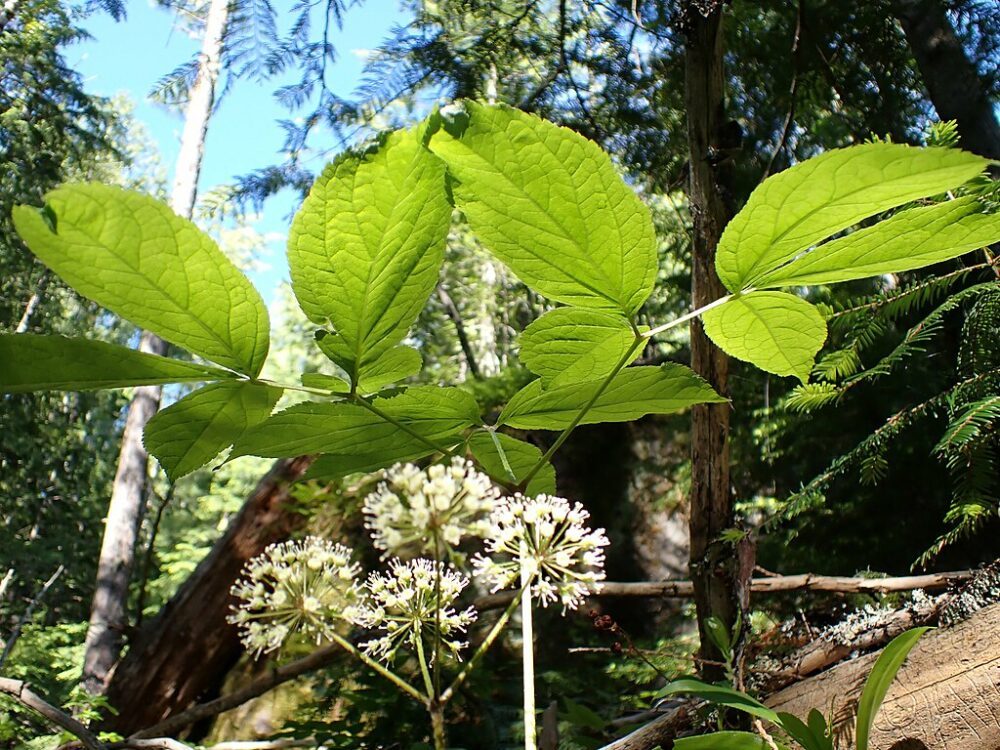
What Is Wild Sarsaparilla Used For?
The rhizome, aka creeping rootstalk or underground stems, makes this plant very special and allows it to survive unfavorable seasons.
The similar rhizome of the Smilax officinalis plant was used to make root beer in the past until it was deemed unsafe. For that reason, Aralia nudicaulis has become a common and popular stand-in.
Nowadays, the roots are commonly used to make tea. The tea is said to be a great remedy for stomachaches, toothaches, sore throats, and even heart pain.
While not as commonly used in modern recipes, some people have experimented with wild sarsaparilla in the kitchen. The roots have a pleasant aroma and can be cooked in various ways.
Other wild plants with edible roots you might want to forage for include:
Can You Eat Sarsaparilla Berries?
While the blue-black berry clusters of this wild plant are edible, they are very astringent and not recommended to be eaten by the USDA. However, some people have used the berries to add flavor to distilled spirits, such as beer and wine.
While the entire wild plant is technically edible, the exterior layer of the roots is the most commonly consumed part of the plant. Native Americans used the roots and leaves to make teas, tonics, and poultices to heal wounds, sores, burns, or illnesses. They additionally found it to be a great cough medicine.
They also ate the aromatic roots during long travels and wars and noticed a burst of energy after eating them.
Aside from humans, wildlife also seems to love eating this wild plant and its berries. Moose, chipmunks, deer, and foxes have been known to enjoy a wild sarsaparilla lunch.
Check out our guides on the following wild edible berries:
How to Spot Aralia Nudicaulis
Knowing how to correctly spot this plant is especially important because it shares a few similarities with poison ivy.
An Aralia nudicaulis plant:
- Is typically between 8 inches or 3 feet in height
- Has a hairless flowering stem and leaf stalk that produces one basal, compound leaf that is divided into five leaflets. The leaflets are usually between two and five inches long with an oval shape, a pointed tip, and finely toothed edges
- Is a flowering plant that produces three clusters (aka inflorescence) that are spherical umbels (1.5 to two inches in diameter) with multiple pale green pedicels coming from a common point
- Has umbels which produce between twenty and forty very small greenish-white flowers. Each flower has five downward-facing petals with white-tipped stamens and a pistil containing five styles
- Has flower clusters which eventually develop into a fruit. The fruit is green at first but matures to be blue-black 1/4 inch round berries
If you live in a climate with four defined seasons, the leaflets are green in the summer, bronze in the spring, and yellow or red in the winter and fall. If you live in a tropical area, they will most likely always be green.

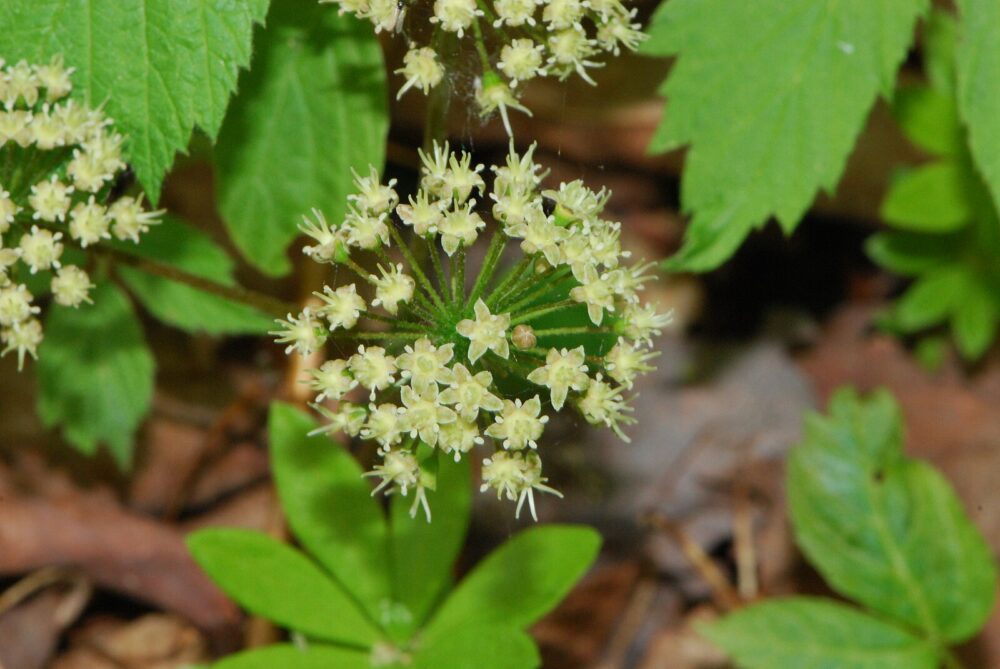
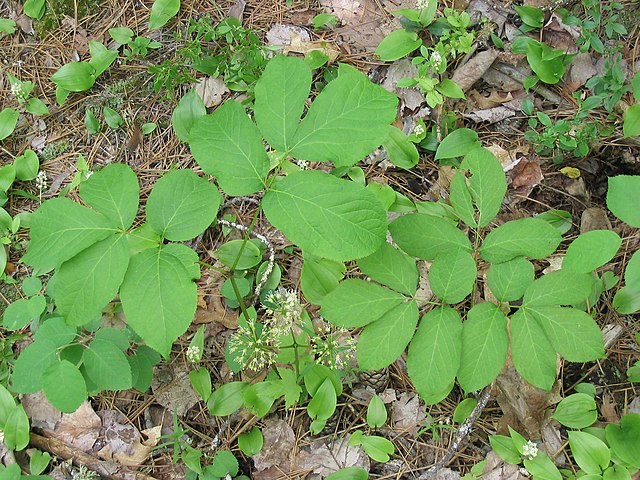
Wild Sarsaparilla Lookalikes
1. Poison Ivy (Toxicodendron radicans)
The best way to tell wild sarsaparilla and poison ivy apart is by looking at the base and leaves. The poison ivy base is woody and the leaves are not as fine-toothed/sharp.
2. False Solomon’s Seal (Maianthemum spp.)
Some species of False Solomon’s Seal, such as Maianthemum racemosum, bear a resemblance to wild sarsaparilla, especially when they are not in bloom.
However, False Solomon’s Seal typically has alternate leaves along the stem, while wild sarsaparilla has compound leaves with three leaflets.
3. Virginia Creeper (Parthenocissus quinquefolia)
Virginia Creeper is a climbing vine with compound leaves that may be confused with wild sarsaparilla. However, the leaflets of Virginia Creeper are usually larger, and the overall growth pattern is different.
4. Goldthread (Coptis trifolia)
Goldthread, another forest floor plant, may share a similar habitat with wild sarsaparilla. However, goldthread has distinctive, deeply lobed leaves, unlike the compound leaves of wild sarsaparilla.
5. American Ginseng (Panax quinquefolius)
American ginseng has compound leaves, and when it’s not in flower or bearing fruit, it might be confused with wild sarsaparilla. However, ginseng typically has five leaflets, while wild sarsaparilla has three.

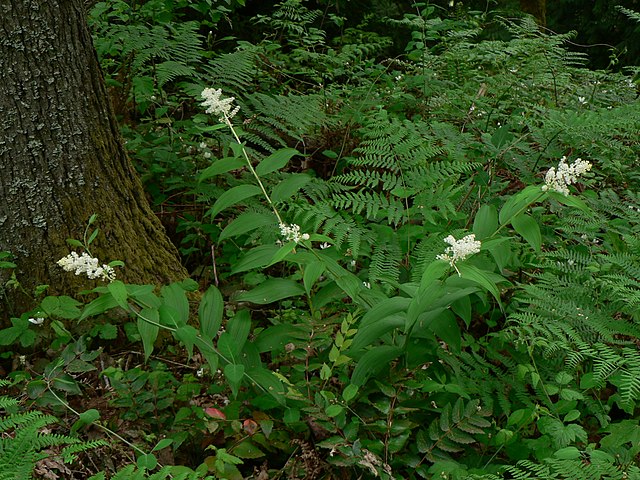
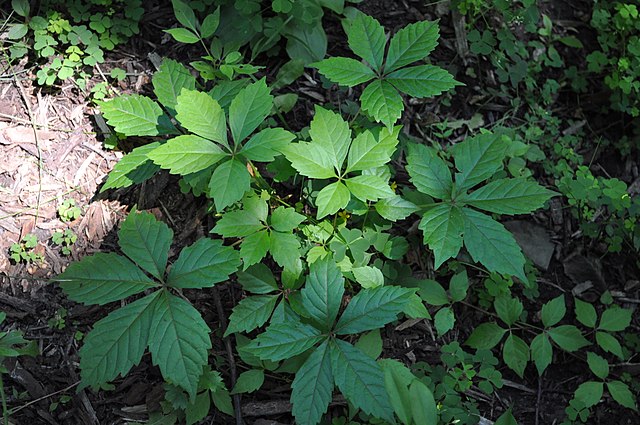
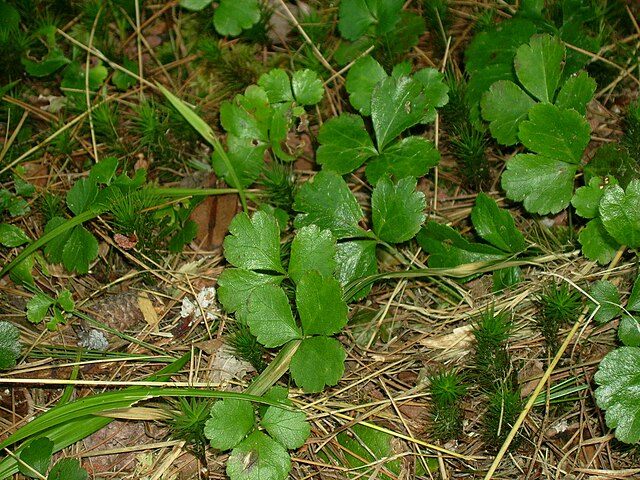
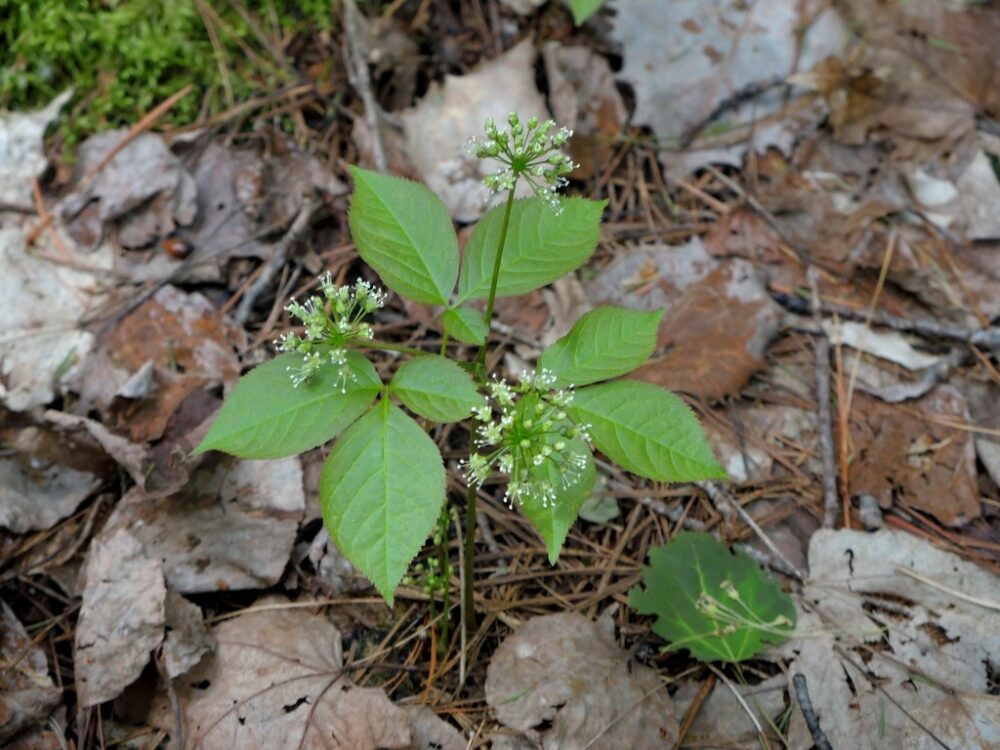
When and Where to Forage for Wild Sarsaparilla?
Wild Sarsaparilla is prevalent in northern climates. It is a native plant of North America, including the US and Canada – from Alberta to Newfoundland.
With that being said, this wild plant prefers moderate to rich, generally moist soil. While it thrives in partial sun, it also tolerates shade.
When to Forage:
- Spring to Early Summer: Wild sarsaparilla is best foraged in the spring to early summer when the plant is actively growing. During this time, the leaves and stems are more tender.
Where to Forage:
- Wooded Areas: Wild sarsaparilla is commonly found in deciduous and coniferous forests. Look for it in wooded areas with well-drained soil.
- Moist, Shaded Environments: Wild sarsaparilla prefers moist and shaded environments. It is often found along stream banks, in damp woods, and in areas with partial to full shade.
How Do You Harvest Wild Sarsaparilla?
To harvest this plant, you are going to need to get a little bit dirty. Remember that the most commonly used part of this plant is the root, so you will need to dig. The root system can be found about five inches under the soil and runs horizontally.
Once you’ve dug down a few inches and gotten a hold of the root system, follow the root along as you lift. Get as much of the root free and exposed until you are satisfied, or it breaks.
These roots can grow over ten feet long. Ensure you leave some of the rootstock in place so the plant can continue growing.
From here, you can break off the leaves and the flower clusters, if you want, and coil the root up to make it easier to transport.
Once you arrive home (or to camp), make sure that you thoroughly wash the roots before consuming them.
How to Make Wild Sarsaparilla Tea
Making this deliciously unique tea is much easier than most people think.
Here is what you need to do:
- Harvest the wild sarsaparilla roots (mentioned above) and wash them
- Put the roots in a covered pot with water and bring to a boil (typically about half of a gallon)
- Over medium heat, bring the contents to a boil
- After it boils, lower the heat and allow the mixture to simmer for about 15 minutes until the color of the water has changed colors
- Allow the contents to cool and then pour the tea through a filter
- Add honey (or another sweetener), if desired, and enjoy the tea hot or cold
As with all medicinal plants, it is best to contact a healthcare professional before using them to treat any type of illness.
If you stumble upon (or go searching for) this plant, take some home for a well-deserved post-hike tea.
Originally from Florida, but with a lust for travel, Sami has found herself in many remote areas with little-to-no access to traditional medicines. Since 2014, she has been experimenting with natural remedies, eastern medicine, and foraging. She believes that the Earth provides us with everything we need to live, heal, and cure.

